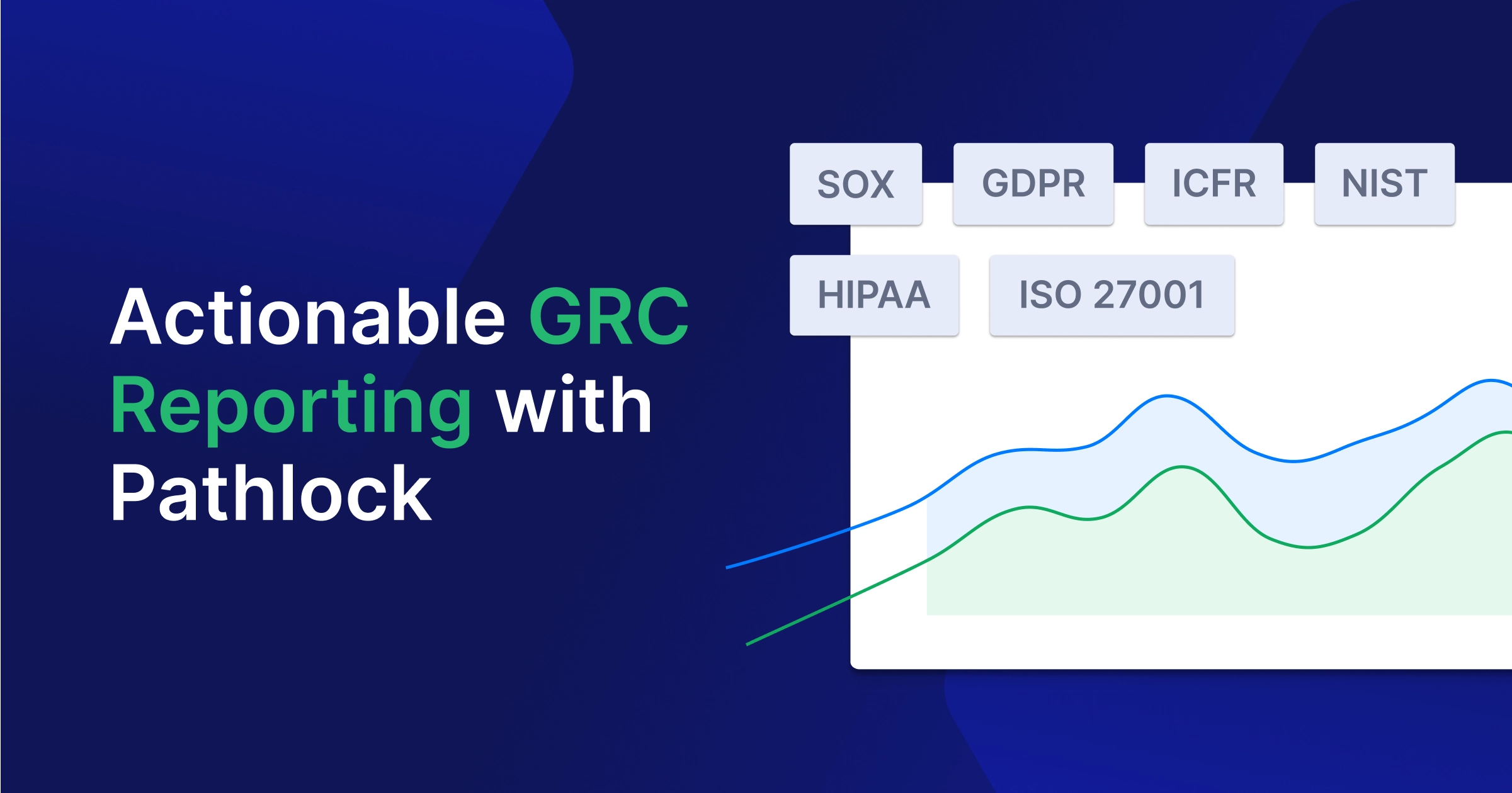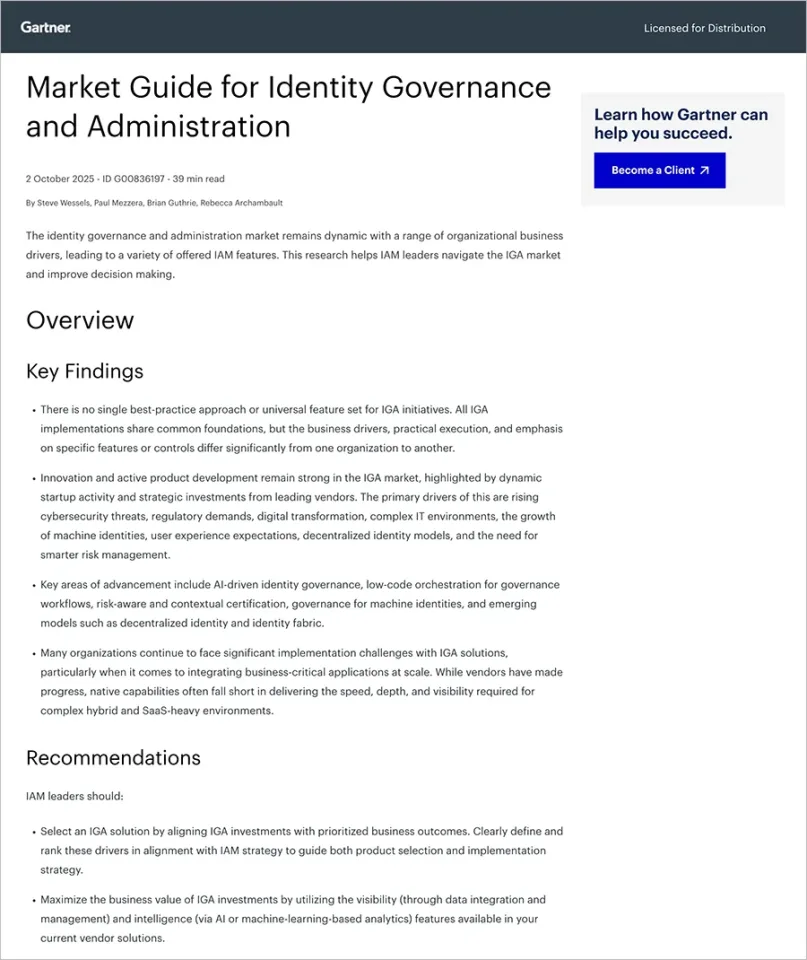What is a User Access Review (UAR)?
User Access Review includes evaluating users’ permissions and privileges across networks, systems, applications, and data repositories as part of a broader access governance strategy to prevent unauthorized and unnecessary access by legitimate users. This includes administrators, service accountants, managers, end users, vendors, and contractual employees interacting with organizational assets.
User Access Review is a continuous process and focuses on answering four major questions:
1. Who has access?
The first step is to identify all accounts that can access any organization resource, create a comprehensive inventory of all active and inactive users, and link them to the specific role type to which they belong, thereby defining the purpose of their access.
2. What is the level of user access?
The next step is determining users’ permissions, roles, and privileges. Which permissions are the least required for performing their job functions?
If Role-Based Access control (RBAC) is present in organizational resources, evaluate user permissions in the context of RBAC, which role is assigned, whether permissions are inherited from a group membership or assigned directly, and if any special privileges are assigned.
3. Is the access valid?
Assess and validate the current privileges assigned to a user according to their job responsibilities, department, or employment status. Check whether their role has changed and they no longer require specific permissions. Collaborate with HR or department heads to review permissions and determine whether any temporary permissions have been assigned and should be revoked.
4. Does access need to be updated?
Once the identification and assessment phase is done, adjust the access policies according to the approvals and document all the changes. Deactivate or delete terminated accounts, remove permissions from groups not used for a defined period, downgrade or grant access to users where roles or responsibilities have been changed, validate that new permission sets are implemented correctly, and ensure that users are not facing issues performing legitimate actions.
Advantages of User Access Reviews
- Prevent Unauthorized Access. Ensure that only the right individuals have access to the right systems, data, and applications, based on their current roles and responsibilities.
- Mitigate Insider Threats. Detect and remove excessive, outdated, or unnecessary permissions that could be exploited, either accidentally or maliciously, by internal users.
- Ensure Regulatory Compliance. Support adherence to compliance requirements by ISO 27001, NIST, HIPAA, SOX, GDPR, and PCI DSS by maintaining a documented and auditable review of access privileges.
- Prevent Data Breaches and Misuse. Reduce the risk of sensitive data being exposed, mishandled, or exfiltrated due to inappropriate access levels.
- Enforce the Principle of Least Privilege. Restrict users to the minimum level of access necessary to perform their duties, limiting exposure and minimizing risks.
- Support Operational Efficiency. Align security with usability by implementing structured, automated access review processes that do not disrupt day-to-day business operations. Automation also simplifies the review process for both IT and business owners.
- Enhance Risk Management. In cybersecurity frameworks such as NIST, CIS, and GDPR, the User Access Review process is regarded as a proactive and ongoing measure for risk management. It serves as a continuous audit of users’ permissions on sensitive data and systems, reducing insider threats, identifying access-related vulnerabilities, and verifying access rights in accordance with organizational policies to ensure regulatory compliance.
- Reduce Licensing Costs. UAR cycles also help reduce licensing costs by identifying inactive users who are not using software for which they have licenses assigned. This process also helps rectify users who do not qualify for a permit according to their role but are still using it due to incorrect access. Licenses can be reclaimed and reassigned to those who need them, rather than requiring the purchase of new ones.
Components of User Access Review Template
A well-structured User Access Review template standardizes the process, making it easy to document each step, ensuring smooth execution with consistency on each occurrence, and ensuring completeness. Following is the list of 7 essential components for user access review templates:
- User Information
- Access Permissions
- Reviewer Information
- Review Frequency and Timeline
- Detailed Review Records
- Access Change Documentation
- Defined Review Workflow
Let’s take a look at each of the component of user access review template:
User Information
Identify the individuals whose access is being reviewed and document attributes like full name, login name, employee ID, department, job title or role, manager, date of hire, termination date, contact information, employment status, last review date, and direct reports.
Access Permissions
Access permissions should be documented for each system type where the user has permission, such as workstations, servers, and applications. Details of specific permissions granted within systems such as “Read-only”, “Read & Execute”, “Full Control”, “Delete”. Explain the justification for access, the date when access was granted, and remarks on the status of privilege and whether it is required.
Reviewer Information
Provide information regarding the reviewer and their authority, such as the reviewer’s full name and title, department, date of review, relationship of the reviewer to the user whose access is being reviewed, and approval acknowledgment.
Review Frequency and Timeline
Define the scheduled time of access review and timeline of completion, such as review period frequency will be quarterly, semi-annually, or annually, plan dates for each review cycle from starting and ending date, and the margin of grace period in case discrepancies are found.
Detailed Review Records
Record the outcome of access reviews, such as decisions made after review, such as whether to keep the permissions as they are, revoke users’ all or some permissions that are not necessary, or assign more permissions. Explanation should be recorded for each decision made, the status of action items to be done according to the review decision, and the date of action item implementation.
Access Change Documentation
This process ensures that user access changes are reviewed and implemented, and can be tracked. Change requests should be linked to an IT helpdesk ticket, and the date of change implementation should be trackable, such as through personnel information, with pre- and post-change access status.
Defined Review Workflow
Outlines the details of each phase step in detail.
Preparation phase
Define the scope, including users, systems, and access types to be reviewed. Generate current access reports, compile them into a review package, and send it to the respective approvers for review.
Review phase
Clearly define review responsibilities and timeline, how access decisions should be made and documented, and what to do in case of disagreement between the reviewer and IT or security teams’ findings.
Archiving phase
Compile comprehensive reports for management and auditors on how long review records should be kept and then archived for future reference.
Examples of User Access Review Templates
Access Review Campaign Template
This template plans, initiates, and documents periodic user access reviews across an organization’s assets or a particular system. It ensures that all valuable steps are followed and records are maintained for audit and compliance purposes. It includes campaign name and description, scope, objectives, participants, reviewer assignments, timeline, tracking status, results, outcomes, and audit trail.
Below is an example of access review campaign template:
| Field | Example |
|---|---|
| Campaign Name | Q2 2025 Access Review – Finance Systems |
| Description | Quarterly access review focused on SAP ECC, GRC, and CRM for Finance staff |
| Scope | All Finance department users with access to SAP ECC, GRC, and CRM |
| Objectives | Ensure least-privilege access, revoke redundant access, and validate critical permissions |
| Participants | Jonathan Stross, Damon Tompkins, IT Security Team |
| Reviewer Assignments | Damon Tompkins to review Jonathan’s access |
| Timeline | Start: 01/06/2025 – End: 30/06/2025 |
| Tracking Status | In Progress |
| Results | CRM access marked for removal |
| Outcomes | SAP ECC and GRC retained; CRM revocation underway |
| Audit Trail | Linked to ticket IT-4502, UAR log ref: UAR-Q2-FIN-EMP10234 |
Application Population Report Template
The User Access Review Report template provides detailed insights regarding users’ permissions to a specific application, including their roles and responsibilities. It includes application name, date of report, user details, roles or access level, access provision date, reviewer comments, current employment status, and activity patterns extracted from logs or application history.
Below is a sample population report template:
| Application | Date of Report | User | Role / Access Level | Provision Date | Reviewer Comments | Status | Activity Logs |
|---|---|---|---|---|---|---|---|
| SAP ECC | 30/05/2025 | Jonathan Stross | Full Control | 10/08/2022 | Required for SAP security config | Active | Logins consistent, last: 29/05/2025 |
| GRC Access Mgmt | 30/05/2025 | Jonathan Stross | Read & Execute | 18/02/2023 | Enables audit access reviews | Active | Reviewed 3x/week, logs confirm use |
| CRM | 30/05/2025 | Jonathan Stross | Read-only | 15/09/2021 | No longer needed | Active | No activity since Jan 20 |
Notifications Template
User Access Review Email Templates standardize communication throughout the UAR process, ensuring precise and consistent messaging for transparency and increased efficiency. They include fields such as recipients, subject, purpose of review, steps to review and approve or reject access, overall timeline, deadline for specific review, support contact, escalation path, and links to relevant systems or documentation.
A samples notification template is below:
Subject: Action Required: Review Access for Jonathan Stross (Finance – SAP/GRC/CRM)
To: Damon Tompkins
CC: IT Security Team
From: [email protected]
Date: 01/06/2025
Dear Damon,
As part of the Q2 2025 User Access Review Campaign, please review the access privileges of your direct report, Jonathan Stross, who serves as an SAP Security Expert in the Finance department.
Access Under Review
- SAP ECC – Full Control
- GRC Access Management – Read & Execute
- CRM – Read-only
Review Instructions
- Log in to the Access Review Dashboard.
- Review each system access line item.
- Approve or flag for revocation with justifications.
- Submit decisions by 30/06/2025.
Timeline & Escalation
- Review Window: 01/06/2025 – 30/06/2025
- Grace Period: 7 days
- Support Contact: [email protected]
- Escalation Contact: [email protected]
Thank you for your cooperation in maintaining a secure access environment.
Sincerely,
Access Compliance Team
Pathlock Security Operations
Step-by-Step User Access Review Process
A systematic and structured User Access Review Process enhances security, compliance, and operational efficiency. To effectively validate user access to an organization’s resources, it is essential to make it a recurring process rather than a one-time task.
Inventory of Tools and Users
The first step is to create a comprehensive list of the organization’s systems, applications, cloud services, data repositories, and infrastructure, and to identify all user accounts along with their detailed permissions.
This inventory should categorize each asset with its user details, including system locations, applications, and cloud services access points, data repositories holding specific types of data, user login names, and other attributes such as job description, department, authentication authority, roles, and particular permissions assigned.
Revoking Access Rights of Terminated Users and Third Parties
After screening the active accounts with permanent job status, categorize accounts that no longer serve the organization and are third-party providers or partner companies’ accounts. Disable terminated user accounts and revoke all permissions.
Carefully assess the permissions of accounts that are contractors, vendors, or belong to third parties and apply the least privilege principle to allow only the rights these accounts require to perform functions with organization assets necessary to their tasks.
Managing Shadow Admin Accounts
Shadow Admin accounts are those that may have accumulated elevated privileges due to various events requiring immediate action from teams beyond IT administrators, and rights were assigned but not revoked after the job was completed, or due to malicious activity.
Identify and document accounts, validate the legitimacy of elevated privileges from HR or the relevant department head, and add them to the official security policy if approved. Otherwise, revoke the permissions until designated authorities approve.
Implement strict control over the creation of admin accounts or the elevation of user permissions to admin accounts.
Addressing Privilege Creep
Privilege creep occurs when users accumulate unnecessary access rights over time, often due to a change in roles where previous role permissions are not revoked. For example, a user worked in the IT department and later moved to the development or support teams. New role privileges were assigned, but previous role permissions were not revoked. Regularly review each user’s access history and role changes, compare them with their current job responsibilities, and revoke outdated permissions.
Removing Unnecessary Access Privileges
Review users’ access permissions and update them according to the latest access policy. The newest policy includes management’s decision to provide guidelines regarding security permissions for each department and job role, as well as regular updates to users’ access.
Downgrading Permanent Access to Temporary
In some cases, users may have been granted temporary access to certain assets. Later, their permissions remain assigned. Assess all accounts with elevated privileges and convert them to just-in-time privileges, or create temporary roles with time-bound access. Add accounts requiring elevated permissions for critical tasks.
Reviewing Access Approval Workflows
The process of requesting access, approval, and provisioning should be well defined and documented for transparency and audit purposes. The UAR process should review who has access, how the access was granted, and whether the approval process is effective and secure. Validate workflow approvers, implement MFA on the request and approval process to ensure the identity of the requestor and approver, and automate workflows where possible to reduce human error and enforce policies.
Documenting Changes Made
Documenting every change during UAR is essential for auditing, accountability, and maintaining an accurate record of access permissions. Record every change made during UAR, from the inventory of tools and users to existing permissions and modifications made in permissions with reason and approving authority, and inform end users or their managers about changes in privileges.
Formalizing Review Cycles
The UAR process should be scheduled frequently according to the requirements of regulatory bodies and to reduce the threat landscape. The frequency of UARs can be quarterly, semi-annually, or annually, with clear responsibilities and a defined scope of the review process, including the start and end dates, the section or sections to be reviewed, and the report compilation and submission dates.
Frequently Asked Questions
Periodic validation process of user access rights and permissions by the organization’s security policy to ensure regulatory compliance and to reduce unauthorized access to the organization’s assets. The primary goal is to ensure that users only have the minimum and necessary permissions required to perform their job functions.
The responsibility of conducting reviews typically falls on managers and supervisors who manage employees for their day-to-day job operations, system or network segment owners, application owners who manage systems such as database servers, web applications, or cloud services, and IT and security teams who are responsible for overall management of infrastructure and its security.
The frequency of review depends on regulatory compliance requirements and the sensitivity of data, such as financial, healthcare, or personal data. Most regulatory bodies recommend an annual review at a minimum. However, different events may require a formal review, such as organizational mergers, acquisitions, or infrastructure expansions. High-privilege account (admin accounts and service accounts) permissions reviews are recommended more frequently.




